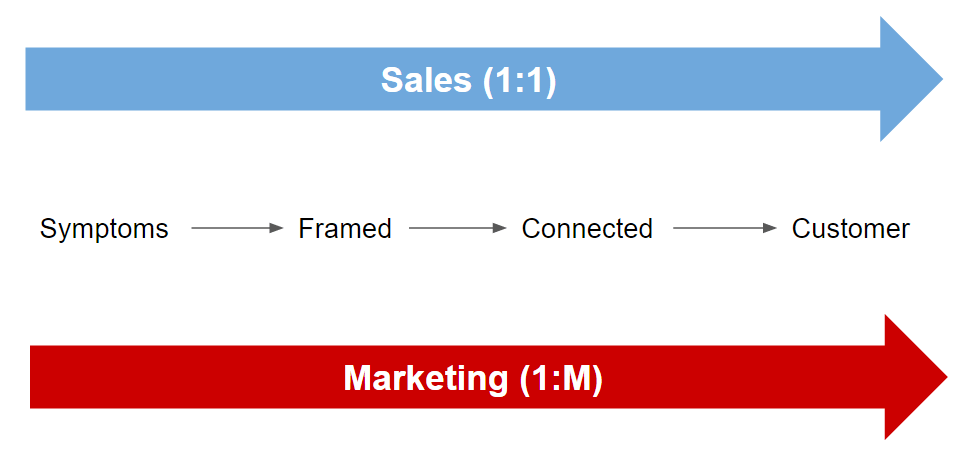For the most successful marketers, the answer to the question "what is marketing" is radically different from the rest. That answer means that some marketers get only "OK" results, while others get great results.
To understand the answer (found at the end of this blog post), we first need to understand how marketing relates to sales.
What does a marketer do compared to a salesperson?
While the majority see marketing as separate from sales, successful marketers see the two functions as two sides of the same coin: marketing and sales work together and simultaneously on the same customer, to lead the customer through a very specific buying journey that goes from experiencing symptoms to buying.
But while the seller does it through one-to-one dialogues, the marketer does it through mass communication:

Good marketing at different stages of the buying journey
Every customer that every company has has gone through these four steps:
- Symptoms: You experience problems, whether you are aware of these problems or not.
- Framed: When you become aware of the symptoms, you need to put them in a context that explains them.
- Connected: When you can explain the symptoms through a context, you need to feel confident that your company can solve them.
- Customer: Only after going through all the steps above can you buy your solution.
Good marketing continually senses where potential customers are in the buying journey, and educates the customer on what they need to understand to get to the next step. So what does a marketer do compared to a salesperson to achieve this?
While the sales function achieves this through dialogues, a marketer does it by reading potential buyers' digital signals, communicating in a relevant way based on these signals, and informing the sellers so they can contact the right person at the right time.
What is marketing done by a good marketer?
The very best marketers answer the question "what is marketing" in four steps:
- Understand exactly what symptoms your customer is experiencing before the customer has contextualized the symptoms (often even before the customer is aware of the underlying issues causing the symptoms).
- Then help the customer understand these symptoms through an explanatory model that favors your own solutions.
- Then position your company as the supplier who, based on this explanatory model, is best placed to solve the customer's symptom or problem.
- Then trigger a purchase, often in close cooperation with the sales department.
Exactly how they perform all these four steps and what they mean in practice will be discussed in the next blog post.


